Clinical observation of Tuina combined with Bu Zhong Yi Qi Tang in the treatment of rectocele
ZHAO Danyang (趙丹旸), WANG Qiang (王強)
1 Shandong University of Traditional Chinese Medicine, Jinan 250014, China
2 Shandong Provincial Hospital, Jinan 250000, China
Abstract
Keywords: Tuina; Massage; Point, Shenque (CV8); Point, Baihui (GV20); Bu Zhong Yi Qi Tang; Syndrome of Qi Sinking Due to Spleen Deficiency; Rectocele
Rectocele, also known as rectal prolapse, is a pelvic floor dysfunction disease that refers to the fullthickness downward displacement of the rectal fold and prolapse outside the anus.According to the length of the rectocele, it can be divided into grade Ⅰ prolapse(less than 4 cm outside the anus), grade Ⅱ prolapse(3-8 cm outside the anus), and grade Ⅲ prolapse (more than 8 cm outside the anus)[1].This disease is commonly seen in children, old people, new mothers, or those with a long history of diarrhea and cough.Among them,patients with grades Ⅰ and Ⅱ are mainly treated with conservative treatments, while patients with grade Ⅲare mostly treated with surgery[2].
Modern medicine believes that there are many factors that cause rectocele, such as changes in anatomical structure and pelvic floor soft tissue and increased intra-abdominal pressure[3].
There are many discussions on the name, etiology,pathogenesis, and treatment of this disease in traditional Chinese medicine (TCM), especially in Jin and Yuan Dynasties.The name of the prolapse of anus was first recorded in theShen Nong Ben Cao Jing(Shennong's Classic of Materia Medica)[4].Doctors of the later generations believe that its onset is related to the lung and large intestine, mostly caused by the deficiency of central Qi, and it can be treated with Bu Zhong Yi Qi Tang (Middle Jiao-supplementing and Qi-boosting Decoction)[5].External treatments such as acupuncture and Tuina (Chinese therapeutic massage)are also effective[6].
The study aimed to observe the effect of Tuina combined with Chinese medicine on patients with grades Ⅰ and Ⅱ rectocele, so as to provide a reference for the conservative treatment of this disease.
1 Clinical Materials
1.1 Diagnostic criteria
The diagnostic criteria of grades Ⅰ and Ⅱ rectocele referred to theClinical Diagnosis and Treatment Guidelines for Rectal Prolapse[7].The clinical manifestation is prolapse of rectal mucosa after cough,prolonged squat position or defecation.The length of prolapse is 3-8 cm, and the mucosa retracts by itself, or it cannot retract by itself and needs assistance.
1.2 Inclusion criteria
The above diagnostic criteria for rectocele were met.TCM syndrome differentiation for Qi sinking due to spleen deficiency: pale red prolapse, accompanied by anal bulge, bloody stools, fatigue, poor appetite,dizziness and tinnitus, and soreness and weakness in the low back and knees.The tongue is pale with a thin and white coating, and the pulse is weak[8].Patients provided written informed consent.
1.3 Exclusion criteria
Complicated with peptic ulcer, inflammatory bowel disease, rectal cancer, or other malignant tumors; with severe heart, brain, liver, kidney, or lung dysfunction;with other serious diseases; women who were menstruating or pregnant; use of drugs or other external treatments in the last 3 months that may affect the observed effects of this study; intolerance to Chinese medicine decoction or Tuina manipulation.
1.4 Statistical analysis
The SPSS version 22.0 statistical software was used to process the data.The measurement data were expressed as mean ± standard deviation.Thet-test was used for data with normal distribution and equal variance, and rank-sum test was used for data without normal distribution or equal variance.P<0.05 indicated that the difference was statistically significant.
1.5 General data
A total of 108 patients with grades Ⅰ and Ⅱrectocele who were treated in the Department of Anorectal and Tuina of Shandong Provincial Hospital between October 2020 and October 2021 were randomly divided into a Tuina plus Chinese medicine group and a Chinese medicine group, with 54 cases in each group.There were no significant differences in gender, age, or rectocele grade between the two groups,indicating that the two groups were comparable(Table 1).

Table 1 Comparison of the general data between the two groups
2 Methods
2.1 Chinese medicine group
Patients in the Chinese medicine group were treated with Bu Zhong Yi Qi Tang orally.
Composition:Huang Qi(Radix Astragali) 18 g,Gan Cao(Radix Glycyrrhizae Preparata) 9 g,Ren Shen(Radix Ginseng) 9 g,Dang Gui(Radix Angelicae Sinensis) 3 g,Chen Pi(Pericarpium Citri Reticulatae) 6 g,Sheng Ma(Rhizoma Cimicifugae) 6 g,Chai Hu(Radix Bupleuri) 6 g,andBai Zhu(Rhizoma Atractylodis Macrocephalae) 9 g.
Methods: Decocted and boiled to 240 mL for oral administration, 120 mL each time, twice a day.Two weeks was a course of treatment, and 6 courses of treatment were given continuously.
2.2 Tuina + Chinese medicine group
The Tuina + Chinese medicine group was treated with Tuina manipulation combined with Bu Zhong Yi Qi Tang.The usage and dosage of Bu Zhong Yi Qi Tang were the same as those in the Chinese medicine group.
Tuina was mainly performed on the Governor Vessel,Conception Vessel, and Bladder Meridian.
The points were Baihui (GV20), Danzhong (CV17),Shenque (CV8), Guanyuan (CV4), Changqiang (GV1),Chengshan (BL57), and Jizhong (GV6).
Methods: The patient was in a supine position, and the doctor sat by the patient’s side.Yi Zhi Chan pushing was performed on Danzhong (GV17) and Guanyuan(CV4) for 2 min per point (Figure 1 and Figure 2).Point-pressing manipulation was applied to Baihui(GV20) and Shenque (CV8) for 2 min per point (Figure 3 and Figure 4).With circular rubbing manipulation, the abdomen was rubbed in a clockwise direction for 1 min and then counterclockwise for 2 min to tonify spleen Qi(Figure 5).The patient was in a prone position, and the doctor stood by the side of the patient while pressing bilateral Chengshan (BL57) for 2 min (Figure 6) and kneading Changqiang (GV1) for 2 min (Figure 7).With linear rubbing manipulation with the palm, rubbed the two hands together to heat them up and then rubbed evenly from Pishu (BL20) to Huiyang (BL35) along the Bladder Meridian for 3 min to warm the kidney and tonify Yang (Figure 8).Each Tuina manipulation lasted for about 30 min, once a day, 4-5 times a week, for 12 weeks.
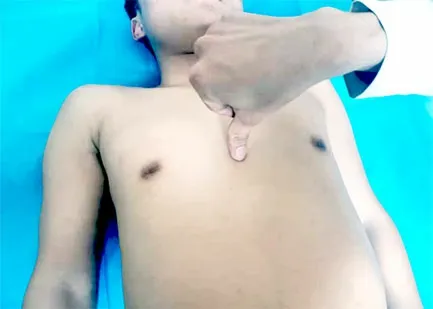
Figure 1 Yi Zhi Chan pushing Danzhong (CV17)

Figure 2 Yi Zhi Chan pushing Guanyuan (CV4)
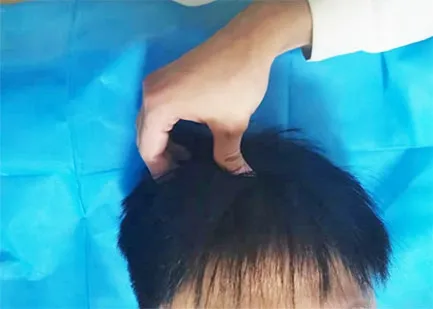
Figure 3 Point-pressing Baihui (CV20)

Figure 4 Point-pressing Shenque (CV8)
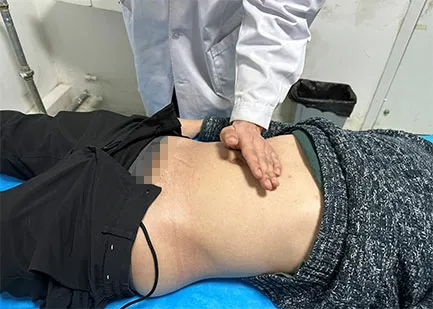
Figure 5 Circular rubbing the abdomen
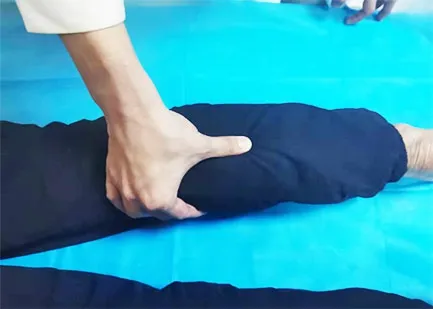
Figure 6 Pressing Chengshan heavily (BL57)

Figure 7 Point-pressing and kneading Changqiang (GV1)
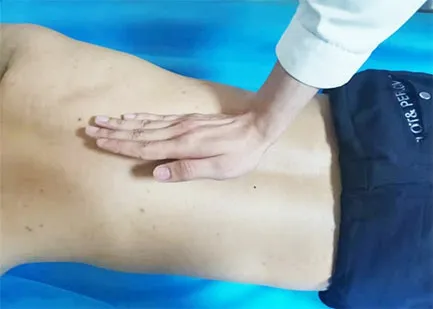
Figure 8 Linear rubbing the Bladder Meridian on the back with the palm
3 Outcome Observation
3.1 Observation items
3.1.1 Grade of rectocele
The grade of rectocele is divided into grade Ⅰprolapse (prolapse length <4 cm) and grade Ⅱ prolapse(prolapse length 4-8 cm).
3.1.2 TCM symptom score
The TCM symptom scoring criteria of this study were formulated according to theCriteria of Diagnosis and Therapeutic Effects of Diseases and Syndromes in Traditional Chinese Medicine[8].
The score was based on the grade of rectocele during defecation: 0 points for no prolapse; 2 points for prolapse <4 cm; 4 points for swelling prolapse 4-8 cm;6 points for swelling prolapse >8 cm.
The score was also based on the degree of anal distension: 0 points for no anal distension; 1 point for daily anal distension, mostly before defecation, lasting for <1 h each time; 2 points for frequent anal distension,often before defecation, lasting for >1 h each time;3 points for severe anal distension that does not resolve even after defecation.
The score was also based on the degree of heaviness of the limbs: 0 points for no heaviness of the limbs;1 point for slight fatigue of the limbs, allowing light work; 2 points for weakness of the limbs, barely allowing daily activities; 3 points for general weakness,not wanting to move around all day long.
Score according to tongue manifestations: 0 points for pale red tongue; 2 points for pale white tongue;0 points for thin white coating; 2 points for white coating.
Score based on pulse conditions: 0 points for a normal pulse; 2 points for a thin or weak pulse.
The sum of the above five items was used as the total score for the TCM symptoms.
3.2 Criteria for therapeutic efficacy
Referred to theCriteria of Diagnosis and Therapeutic Effects of Diseases and Syndromes in Traditional Chinese Medicineto develop the efficacy criteria[8].
Cured: Clinical symptoms such as the prolapsed rectum and defecation difficulties disappeared, and anal sphincter function was good.
Effective: Clinical symptoms were significantly improved, and the length of prolapse was reduced by more than 3 cm.
Invalid: No significant improvement in clinical symptoms or the grade of rectocele.
3.3 Results
3.3.1 Comparison of the efficacy
The clinical efficacy of the two groups was tested by Mann-WhitneyU-test, andP<0.05 indicated that the difference was statistically significant.See Table 2.
3.3.2 Comparison of the grade of rectocele
Before treatment, there was no significant difference in the grade of rectocele between the two groups(P>0.05), indicating that the two groups were comparable.After treatment, the grade of rectocele in the two groups was significantly different from that before treatment (P<0.05), indicating that the grade of rectocele in the two groups was reduced.After treatment, there was a statistically significant difference in the grade of rectocele between the two groups(P<0.05), suggesting that Tuina combined with Chinese medicine was better than Chinese medicine alone in improving the grade of rectocele.See Table 3.

Table 2 Comparison of the clinical efficacy between the two groups Unit: case

Table 3 Comparison of the grade of rectocele between the two groups before and after treatment Unit: case
3.3.3 Comparison of the TCM symptom score
Before treatment, there was no statistical difference in the TCM symptom score between the two groups(P>0.05), indicating that the two groups were comparable.After treatment, the scores of heavy limbs,fatigue and no desire to speak, tongue manifestations,and pulse conditions in the Tuina + Chinese medicine group were lower than those in the Chinese medicine group, and the differences were statistically significant(P<0.05).There was no statistical difference in improving anal distension between the two groups(P>0.05).See Table 4-Table 7.There was statistical significance in comparing the total score of TCM symptoms between the two groups after treatment(P<0.05), suggesting that Tuina plus Chinese medicine was superior to Chinese medicine alone in improving TCM symptoms.See Table 8.

Table 4 Comparison of the anal distension score Unit: point

Table 5 Comparison of the limb heaviness score Unit: point

Table 6 Comparison of the fatigue and no desire to speak score Unit: point

Table 7 Comparison of the tongue manifestations and pulse conditions score Unit: point

Table 8 Comparison of the total TCM symptom score Unit: point
4 Discussion
Rectal prolapse is a benign pelvic floor disease, the treatment is complex, and the recurrence rate is high.Due to the lack of level-1 evidence literature for the treatment of this disease at home and abroad, though there are many treatment methods at present, they rely more on the doctors’own diagnosis and treatment experience[9].The preferred method of Western medicine is minimally invasive laparoscopic rectal resection[10], while perineal rectosigmoid resection is preferred for postpartum or aged women with weak bodies[11].But they are damaging and not easily accepted by patients.There are various methods of TCM to treat this disease, which can ensure the maximization of the interests of patients.At present, Bu Zhong Yi Qi Tang, which can promote Yang Qi, is commonly used as an internal treatment of TCM[12].Later generations of doctors used it to treat rectocele,uterine prolapse, gastroptosis, and other organ prolapse.In this study, Bu Zhong Yi Qi Tang combined with Tuina therapy was used to improve the cure rate, the concurrent symptoms, and the quality of life of patients.
Tuina manipulations performed in this study are mainly circular rubbing manipulation, Yi Zhi Chan pushing, and point-pressing.Among them, palmar circular rubbing the abdomen can warm the kidney and spleen, regulate Qi, and resolve stagnation, showing obvious advantages in the treatment of rectocele,gastroptosis, and other organ prolapse[13].The Yi Zhi Chan pushing manipulation has the effect of relaxing tendons, harmonizing meridians, and harmonizing the Ying-Nutrient and Wei-Defensive Qi.Danzhong (CV17) is the Front-Mu Point of the pericardium and the Influential Point of Qi in the Eight Influential Points.The Yi Zhi Chan pushing manipulation at Danzhong (CV17)can make the rise and fall of human Qi in an orderly manner and can be used to treat gastrointestinal diseases[14].Guanyuan (CV4) is where the lower Jiao(energizer) Yuan-Primordial Qi converges and can be used for Yin and Yang deficiency[15].The point-pressing manipulation has a small force surface, strong stimulation, and the effect of unblocking collaterals,relieving pain, and regulating Zang-Fu organs.Baihui(CV20) is the crossing point of all vessels and Yang meridians, and it can regulate Yin and Yang of the body.Therefore, point-pressing and kneading Baihui (CV20)has the effect of benefiting Qi and supporting Yang,raising Yang and lifting the sunk[16-17].Shenque (CV8) is the root of the body’s Yuan-Primordial Qi, and pointkneading it can strengthen Qi of the spleen and kidney and enhance the effect of restraint and fixation so as to raise Yang and lift the anus[18].An important reason for the therapeutic effect of the linear rubbing method is its thermal effect[19].Linear rubbing the Back-Shu Points can treat rectocele caused by deficiency of the gate of life and Qi[20].Chengshan (BL57) is an experienced point for hemorrhoids.Changqiang (GV1) is at the midpoint of the line between the anus and the coccyx tip, under which there are branches of the caudal nerve.Point-kneading Changqiang (GV1) can make the local area receive continuous stimulation to produce excitation, thereby acting on the anal sphincter and improving local blood circulation[21].Secondly,continuous stimulation to Changqiang (GV1) and Chengshan (BL57) can enhance the tension of the smooth muscle of the digestive tract[22]and promote the retraction of the rectum.Through the treatment of Tuina manipulations, Qi of the whole body can be effectively adjusted, especially to enhance the lifting power of spleen Qi and the fixing power of kidney Qi,improve the local blood circulation, and thus promote the retraction of the rectum.
This study confirmed that Tuina combined with Chinese medicine can effectively decrease the grade of rectal prolapse.The results showed that the grade of rectocele recovery and the reduction of TCM symptom score in the Tuina + Chinese medicine group were more significant than those in the Chinese medicine group,indicating that the effect of Tuina plus Bu Zhong Yi Qi Tang in the treatment of rectocele of Qi sinking due to spleen deficiency is better than that of Bu Zhong Yi Qi Tang alone, which provides a new idea and method for the clinical treatment of rectocele and is worthy of clinical promotion.
Conflict of Interest
The authors declare that there is no potential conflict of interest in this article.
Acknowledgments
This work was supported by the Science and Technology General Project of Traditional Chinese Medicine in Shandong Province (山東省中醫藥科技面上項目,No.2020M043).
Statement of Informed Consent
Informed consent was obtained from all individual participants.
Received: 17 November 2021/Accepted: 12 July 2022
——山東省濟寧市老年大學之歌
 Journal of Acupuncture and Tuina Science2023年3期
Journal of Acupuncture and Tuina Science2023年3期
- Journal of Acupuncture and Tuina Science的其它文章
- Journal of Acupuncture and Tuina ScienceInstructions for Authors
- Editorial Members of Journal of Acupuncture and Tuina Science
- Acupuncture intervening depressive disorder:research progress in its neurobiological mechanism
- Efficacy and safety of acupuncture-moxibustion for cerebral palsy-induced speech impairment:a systematic review and meta-analysis
- Clinical observation of acupuncture treatment for children with accommodative myopia
- Clinical study of treating somatoform pain disorder with the combination of electroacupuncture and duloxetine
